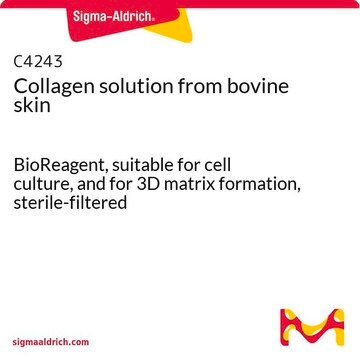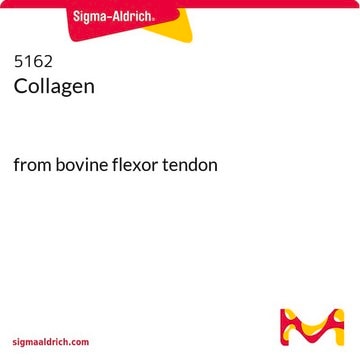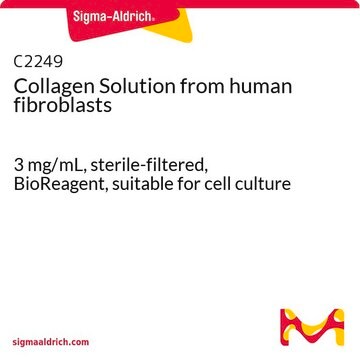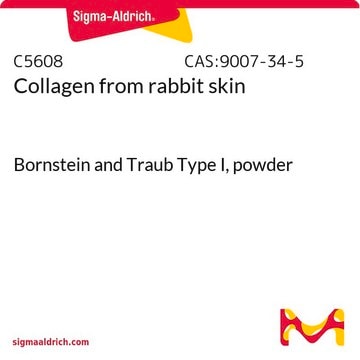C7661
Rat Collagen Type I
from rat tail, powder, suitable for cell culture
About This Item
Recommended Products
product name
Collagen from rat tail, Bornstein and Traub Type I, powder, BioReagent, suitable for cell culture
biological source
rat tail
product line
BioReagent
form
powder
mol wt
120—160 kDa
packaging
glass bottle of 5 mg
technique(s)
cell culture | mammalian: suitable
surface coverage
6‑10 μg/cm2
solubility
soluble
NCBI accession no.
UniProt accession no.
Binding Specificity
Peptide Source: Fibrinogen
Peptide Source: Laminin
storage temp.
2-8°C
Gene Information
rat ... Col1a1(29393)
Looking for similar products? Visit Product Comparison Guide
General description
Application
- Immunohistochemistry
- Cellular activity assays
- Used in generation of dorsal root ganglion (DRG) explant cultures
- Used as one of the components during the preparation of the functionalized surface (in NMR setup)
- Used in cell culture (the glass coverslips were coated with nanowires at high concentrations mixed with collagen)
- Used for biofunctionalization of the microchannels
Biochem/physiol Actions
Preparation Note
Other Notes
Storage Class Code
11 - Combustible Solids
WGK
WGK 1
Flash Point(F)
Not applicable
Flash Point(C)
Not applicable
Personal Protective Equipment
Certificates of Analysis (COA)
Search for Certificates of Analysis (COA) by entering the products Lot/Batch Number. Lot and Batch Numbers can be found on a product’s label following the words ‘Lot’ or ‘Batch’.
Already Own This Product?
Find documentation for the products that you have recently purchased in the Document Library.
Customers Also Viewed
Articles
The extracellular matrix (ECM) is secreted by cells and surrounds them in tissues.
The extracellular matrix (ECM) is secreted by cells and surrounds them in tissues.
The extracellular matrix (ECM) is secreted by cells and surrounds them in tissues.
The extracellular matrix (ECM) is secreted by cells and surrounds them in tissues.
Our team of scientists has experience in all areas of research including Life Science, Material Science, Chemical Synthesis, Chromatography, Analytical and many others.
Contact Technical Service












